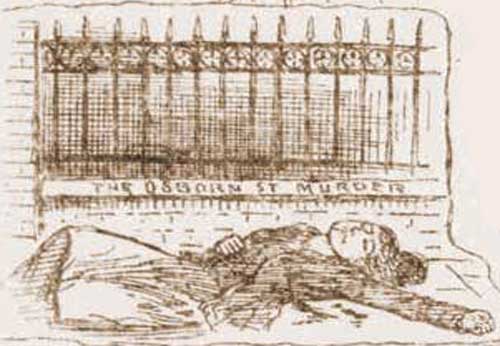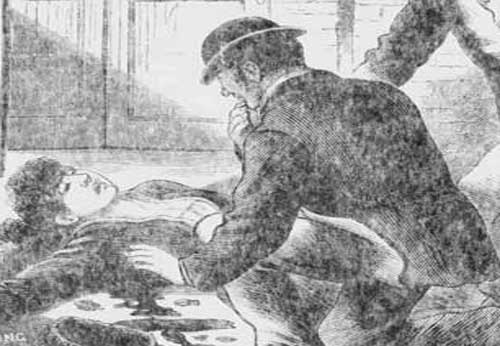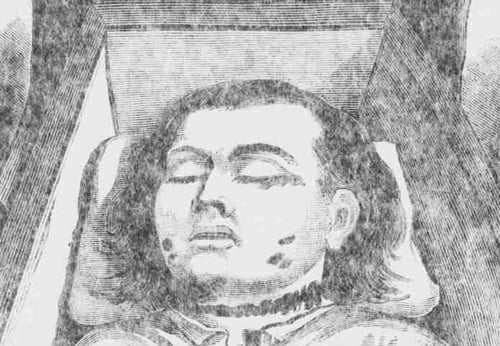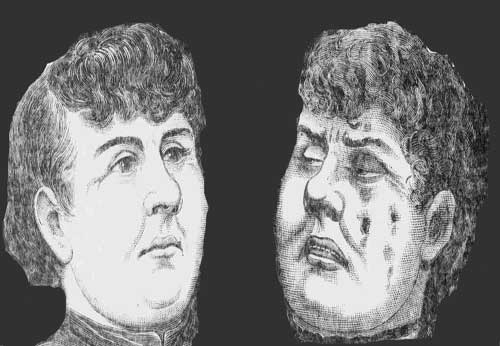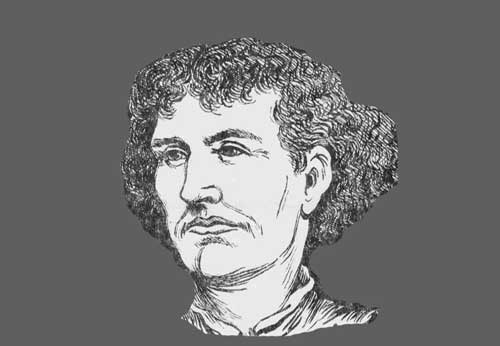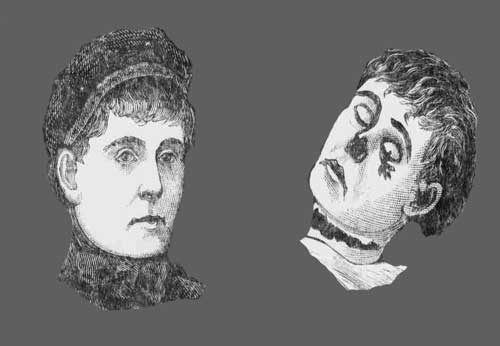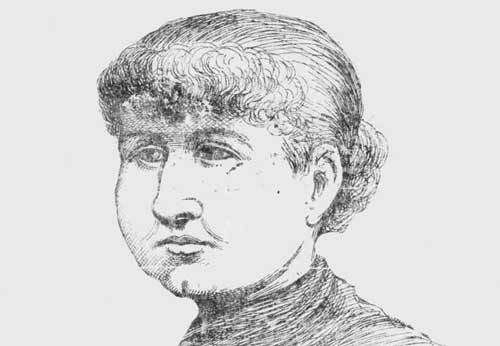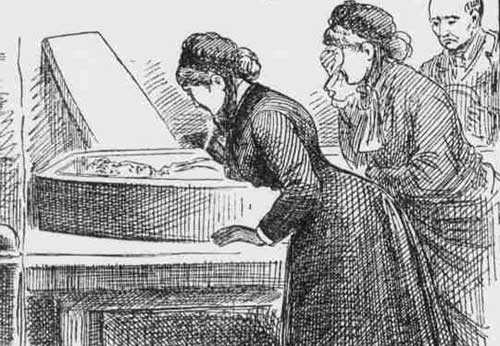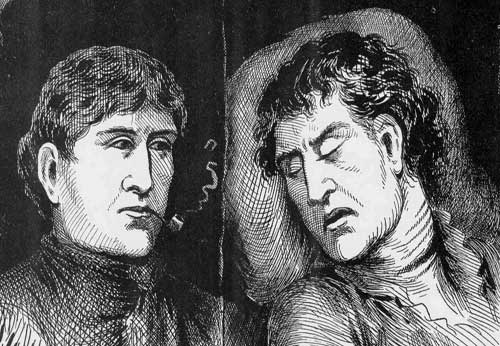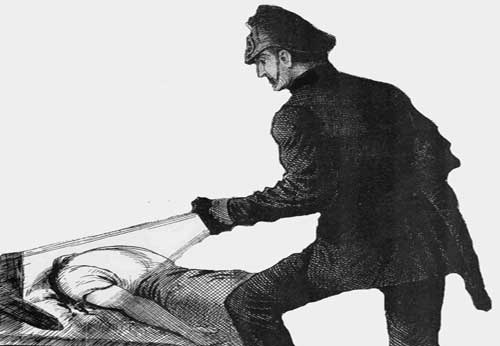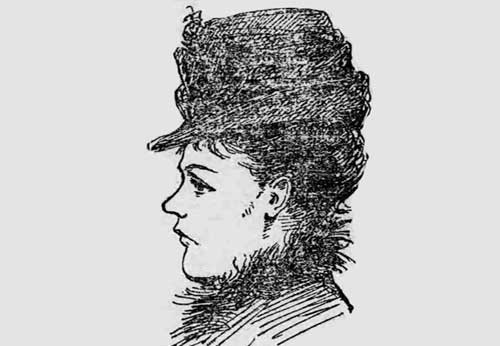- Annie Chapman's body was found in the backyard of 29 Hanbury Street at 6am on the morning of 8th September, 1888.
- Her body had been horrifically mutilated and the killer had also taken away her womb.
- On this occasion the police did in fact make a detailed scene of the crime search..
- However, nothing tangible was actually revealed by this search.
- Site Author and Publisher Richard Jones
- Richard Jones
THE MURDER OF ANNIE CHAPMAN - 8TH SEPTEMBER 1888
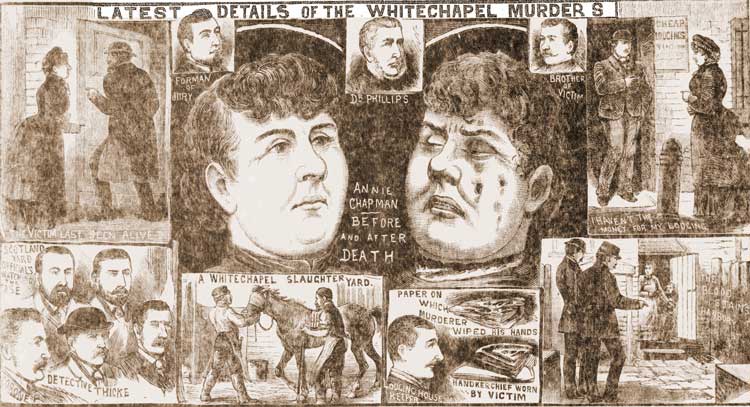
JOHN DAVIS FINDS THE BODY
A little before 6am John Davis, an elderly resident of 29 Hanbury Street came downstairs, walked along the narrow passageway and opened the back door.
The sight that met his eyes sent him reeling back in horror.
Moments later two workmen walking along Hanbury Street were suddenly startled when, from the open door of number 29, a wild eyed old man came stumbling into the street.
"Men" he cried "come here."
Nervously they followed him along the passageway and looking into the yard back yard of 29 Hanbury Street they saw the mutilated body of Annie Chapman lying on the ground between the steps and the wooden fence.
Her head was turned towards the house and her clothes had been tugged up above her waist exposing her red and white striped stockings.
A handkerchief was tied around her throat (she had been wearing this when the killer cut her throat and it had not, as has often been asserted, been tied by her murderer to "stop the head from rolling away").
Her face and hands were covered in blood, and her hands were raised and bent with the palms towards the upper portion of her body giving James Kent the impression that she had "been struggling…[and] had fought for her throat."
THEY GO FOR THE POLICE
After a few moments of stunned silence, the three men sprang into action, and racing out of the house set off in different directions to find a policeman.
The horror of what he had witnessed immediately began to sink in with James Kent, causing him to abandon his search and go instead for a brandy to steady his nerves.
Henry Holland raced up to Commercial Street and headed across to Spitalfields Market where he encountered a constable on fixed point duty. Holland panted out news of their find and was somewhat taken aback when the officer curtly informed him that it was against procedure for him to leave his post. He was so angered by the officer’s officious attitude that he later made and official complaint to Commercial Street Police Station, only to be told that the officer had been correct to follow procedure and not leave his post!
John Davis, meanwhile, had headed to Commercial Street Police Station and bursting in through its doors, breathlessly demanded to see a senior officer.
INSPECTOR CHANDLER ARRIVES
Moments later Inspector Joseph Chandler was hurrying along Commercial Street.
Turning along Hanbury Street, he forced his way through the spectators who were already gathering in the passage of number 29. He ordered that the vicinity be cleared of all sightseers and then sent a constable back to Commercial Street Police Station, instructing him to bring as many reinforcements as possible in order that the crowds might be contained. Another officer was dispatched to fetch Dr George Bagster Phillips, the Divisional Police Surgeon.
Chandler then acquired some sacking from one of the neighbours and used it to cover the body until the arrival of the Police Surgeon.
DR BAGSTER PHILLIPS ARRIVES
By the time Phillips arrived at around 6.30am the crowd outside the house was some several hundred strong.
Casting a cursory glance down at the body it was more than obvious to him that the woman was beyond medical help.
His testimony at the inquest recalled what he saw:-
“The left arm was placed across the left breast. The legs were drawn up, the feet resting on the ground, and the knees turned outwards. The face was swollen and turned on the right side. The tongue protruded between the front teeth, but not beyond the lips. The tongue was evidently much swollen. The front teeth were perfect as far as the first molar, top and bottom and very fine teeth they were. The body was terribly mutilated...the stiffness of the limbs was not marked, but was evidently commencing. He noticed that the throat was dissevered deeply; that the incisions through the skin were jagged and reached right round the neck...On the wooden paling between the yard in question and the next, smears of blood, corresponding to where the head of the deceased lay, were to be seen. These were about 14 inches from the ground, and immediately above the part where the blood from the neck lay.”
Later that day the post mortem would reveal that the killer had deftly cut out Annie Chapman's womb and had gone off with it.
But at that hour of the morning there was little more that Dr. Phillips could do at the scene so, having pronounced the woman dead, he ordered that she be removed to the Whitechapel Workhouse Infirmary, in Eagle Street, off Old Montague Street.
THE BODY IS TAKEN TO THE MORTUARY
Watched by the agitated crowd, a battered coffin was carried from the building and placed on the police ambulance, which set off eastwards along Brick Lane Hanbury Street then turned right onto Brick Lane.
A little before 7am it pulled up outside the mortuary gates where Robert Mann, whose unauthorized stripping and washing down the body of Mary Nichols was, no doubt, still fresh in the minds of the Police, was waiting to receive it.
THE BODY WAS NOT TO BE TOUCHED
When Inspector Chandler turned up a few minutes later he took one look at Mann and made it clear that nobody was to touch the corpse until Dr Phillips had completed his post mortem examination.
Satisfied that his instructions had been understood, Chandler placed PC Barnes in charge, and headed back to Commercial Street Police Station. Both he and Dr Phillips were furious to later discover that within two hours of his departure two nurses, acting on instructions from the Clerk of the Workhouse Guardians, had once more stripped and washed the body before a post mortem could be carried out.

